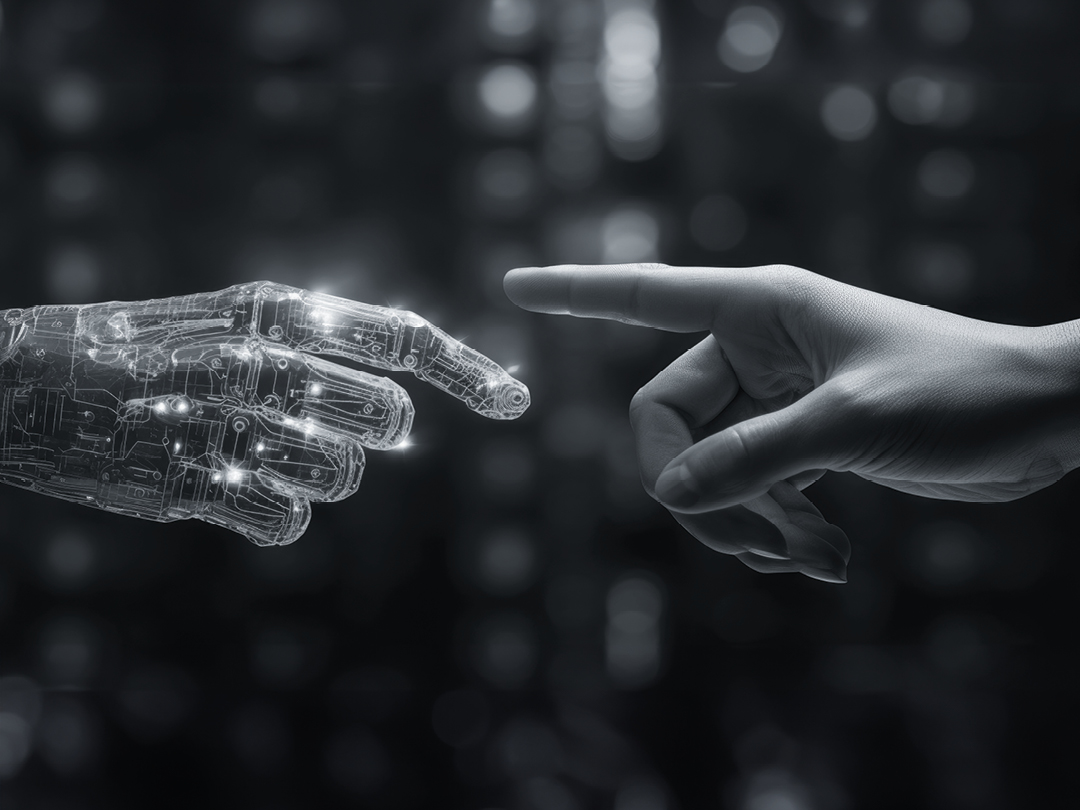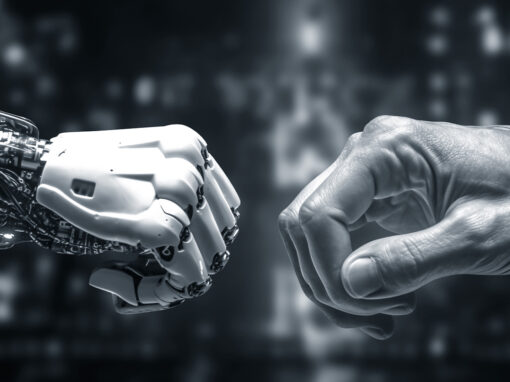Change is the only constant in the world
“I never step into the same river twice,” I often heard from older and wiser folks in my youth. At that time, it was entirely clear to me that it was a warning not to repeat the same mistake twice. If you’ve been in a certain place before or tried a certain action, why repeat it? Draw conclusions and don’t get into the same thing again. That’s the meaning I derived from that sentence. At the time, I didn’t yet know that it originated from the ancient philosopher Heraclitus of Ephesus, and those passing it on to me didn’t understand the intention of its creator. The Greek sage added: “You never step into the same river twice, for it’s not the same river and you’re not the same person.” This means that even if you seemingly enter the same river again, it will be fundamentally different. You cannot repeat exactly the same situation twice because circumstances change. Everything changes. Everything flows.
Future competencies – two attitudes
A distorted interpretation of Heraclitus’ thought was an expression of a natural human aversion to change. The attitude of wisdom proposed by the philosopher is quite different. It’s expressed in the acceptance of change, in welcoming it with enthusiasm, in recognizing that it’s a fundamental dimension of our reality. Faced with transformation, environmental instability, and technological development – which attitude are we closer to? A lot depends on this choice – I would even venture to say that our professional success depends on it as well. In the job market, much like in the ancient parable, we cannot step into the same river twice. Artificial intelligence and automation are transforming professions, creating new ones, and eliminating those we knew. This is undoubtedly a challenge, but also an opportunity for development. So, will our reaction be fear and clinging to outdated skills, or will we reach for future competencies? In a world where “other waters have already flowed”, flexibility and a readiness for continuous learning become our most valuable assets. The attitude of wisdom proposed by Heraclitus is not just the acceptance of inevitable change but also actively seeking ways to turn changes to our advantage. In the context of the job market, it’s precisely the ability to adapt that shapes our future. Embracing change, instead of resisting it, opens doors to unlimited possibilities for us and it helps in developing future competencies.
Human reaction to change
Human attitude towards change is deeply rooted in evolutionary history, where change often meant danger. When our ancestors suddenly noticed shining eyes in the bushes or heard unexpected noises, there was no time for analysis or gathering more data. Instinctively, their bodies activated the fight or flight program, creating shortcuts in the brain, enabling quick action. This mechanism is with us to this day. Although the threats we face have significantly changed, change still causes stress in us, and our reactions to it are predictable, following a path that can be called the change cycle:
- The adaptation process begins with denial. This is the phase where we try to ignore the change, deluding ourselves that it might disappear on its own or that it’s a momentary whim that will be quickly abandoned. So, we think, for example: “I’ll wait until they give up on this idea,” trying to maintain the status quo.
- However, when the change becomes inevitable and it’s hard to deny its presence any longer, we enter the resistance phase. We no longer say, “The change doesn’t exist,” but rather: “The change exists, but I don’t want it.” At this stage, we try to actively fight the change, often not yet seeing the potential benefits it may bring.
- But when the fight starts to be ineffective, and the change remains a part of our world, we slowly begin to explore the situation. “All right, maybe I’ll give it a try after all,” we think, becoming more open to exploration. At this stage, we start to see the possible benefits of the change, which can lead to gradually accepting the new reality.
- Ultimately, when we start experiencing the positive aspects of the change, we enter the engagement phase. “This is better,” we acknowledge, accepting the change as part of our life and work.
Such an adaptation process, although challenging and full of obstacles, is crucial for our development and survival in a constantly changing world, especially in the dynamic job market, where artificial intelligence and new technologies constantly reshape our reality. But the change cycle is spinning faster and faster every day.
Why the VUCA world is already BANI
In today’s world, dynamically changing under the influence of phenomena such as the pandemic, geopolitical unrest, or technological development, we increasingly use the concept of the VUCA World – an acronym describing its volatility, uncertainty, complexity, and ambiguity. These four words make up the characteristic of the times we live in, reflecting the unpredictability and complex nature of global challenges. However, as changes accelerate, a new term emerges – the BANI World, describing reality as brittle, anxious, non-linear, and incomprehensible. The new approach shows that what used to seem unstable is no longer even reliable. Uncertainty gives way to anxiety, and the complexity of systems no longer lends itself to linear interpretations, making it incomprehensible.
Can we prepare for constant change?
A new response to the characteristics of the VUCA and BANI World becomes necessary. The best response to volatility is a comprehensive vision that doesn’t rigidly attach itself to specific steps but allows for “drifting” with a clear goal always on the horizon. In the face of uncertainty, deeper understanding becomes crucial, involving considering a broader context and analyzing long-term consequences, which helps avoid impulsive reactions to short-term changes. In response to the complexity of the world, the pursuit of clarity through uncomplicating matters becomes essential. And in the context of ambiguity, agility in emerging as a crucial skill. So, here’s how we can prepare for an ever-changing reality: by developing flexible thinking, a readiness for continuous learning and adaptation, and the ability to react quickly to changes. Only by accepting uncertainty and building future competencies can we survive and thrive in a world that continually surprises us.
Future competencies – what’s worth investing in
I recently conducted incredibly interesting workshops with the managerial staff of one of the large global corporations. During several intense days of work, we focused on a practical understanding of the challenges that VUCA and BANI models pose to teams every day. Through our discussions, certain key questions emerged, which helped participants delve deeper into their experiences related to managing in uncertain times. We considered situations where traditional management methods failed, forcing us to seek new, unconventional solutions.
From our conversations, a list of traits emerged, which we collectively recognized as fundamental in the context of job market challenges and are also resistant to automation and cannot be easily replaced by technology. These could indeed be the future competencies. These are: flexibility, openness, relationality, adaptability, information hygiene, the ability to change perspective, emotional openness, and patience. Each of these brings unique value to the technicized work environment, thereby giving an advantage that technology, at least at the current stage of development, cannot provide.
- Flexibility enables employees to quickly adapt to changing conditions and challenges, which is essential in a world where change is the only constant.
- Openness encourages the acceptance of new ideas and exploration of unknown solutions, fostering innovation and creativity, which are crucial for predicting and adapting to future trends.
- Relationality emphasizes the importance of building and maintaining strong interpersonal relationships, which are the foundation of effective collaboration and mutual support within a team.
- Adaptability is the ability to flexibly respond to changes, allowing for effective management of uncertainty and leveraging it as a source of opportunity.
- Information hygiene points to the necessity of critically selecting and analyzing available data, which is essential in an era of information overload.
- The ability to change perspective allows for a better understanding of diverse viewpoints and needs, which is important for an innovative approach to problems and challenges.
- Open emotional communication is the foundation for building trust and authenticity in professional relationships, which in turn leads to a better work atmosphere and increased productivity.
- Patience enables maintaining calm and focus on long-term goals in the face of immediate challenges, which is invaluable in the context of rapid and often unpredictable changes.
The aforementioned future competencies, developed and nurtured among employees, form a solid foundation for creating effective teams. They provide people with an advantage that artificial intelligence, at least at the current stage of development, cannot provide. In a world where machines are taking on an increasing number of tasks, it is precisely fully human qualities such as creativity, empathy, and the ability to engage in complex emotional reasoning that guarantee being irreplaceable.
Personal agility – the basic competency of Employee 2.0
The common denominator of the above-mentioned characteristics is personal agility. It is not only the ability to quickly adapt to new conditions but above all a positive, enthusiastic approach to change. It is the ability to react to a dynamic environment with self-awareness, a strong sense of purpose, and readiness to take action. An agile person not only tolerates change but also appreciates it as a source of growth and improvement, continually evaluating the effectiveness of their actions and being ready to modify their approach to achieve desired results. Developing personal agility allows us to survive in the VUCA and BANI world and even more – it allows us to find our place in it through our own creativity, empathy, and flexibility. This ability makes us an indispensable part of the world of work, regardless of the pace of technological progress.
The Agile Manifesto, known for project and organizational management, emphasizes the advantage of people and interactions over processes and tools, functioning solutions over detailed documentation, communication with the customer over contract negotiations, and responding to changes over blindly following a plan. Similarly, we need a manifesto of personal agility that prioritizes unique human qualities and skills such as non-verbal communication, intuition, emotional intelligence, as well as holistic and experimental evaluation of our experiences. In a world where technology successfully takes over tasks based on rigid processes, repetitive procedures, and detailed documentation, the key to being irreplaceable is focusing on skills that are deeply human. It is precisely communication beyond words, intuitive and emotional relationships, cooperation based on kindness, respect, and empathy, as well as the ability to adaptively respond to changes that constitute our greatest asset in the era of technology. We should build our future competencies on this very thing.
Challenges in building personal agility
The greatest challenge in developing personal agility is the widespread obsession with perfection. In a world where perfectionism is seen as a virtue, it is easy to forget that it is often not only unnecessary but can also be harmful. From my own practice as a coach and manager, I know that this challenge occurs extremely often among employees in various industries. Although perfectionism is useful in situations requiring absolute precision, in everyday life, both at work and in life, it easily becomes an obstacle. Focusing on perfection at the expense of other important aspects leads to negative consequences for ourselves and for our relationships with others. Perfectionism is associated with unrealistic expectations, which is destructive not only for our mental well-being but also for the mental health of people in our environment. Focusing on flawlessness limits creativity, slows down actions due to excessive analysis, and also leads to risk avoidance, which can result in a lack of initiative.
Action is more important than perfection
The Pareto principle, which states that 80% of success comes from 20% effort, and the remaining 20% of success requires as much as 80% effort, indicates where our priorities should lie. Finding balance and accepting that action, even imperfect, is better than stagnation caused by the vision of unreal perfection becomes crucial. Changing our mindset towards “I am good enough,” “I am 80% ready,” or “Action is more important than perfection” opens us up to continuous learning and development. By recognizing that every step, even a wrong one, is valuable and moves us forward, we learn to accept our imperfections and allow others to do the same. In this context, agility becomes not just a trait but a way of life that enables adaptation and growth in a dynamically changing world. Let us allow ourselves and others to be imperfect, and our personal agility will flourish and lead us to success, which is not defined by flawlessness but by the ability to grow, learn, and adapt.
The irreplaceable human factor
In the face of dynamic changes brought about by the VUCA and BANI world, and in the context of the increasing technologization of the work environment, redefining the role of the 21st-century employee becomes crucial. What is required of us as individuals is not so much a struggle against constantly advancing technology but rather the ability to adapt and coexist with it. In a situation where automation and artificial intelligence are taking over more and more tasks, precisely these most human qualities – flexibility, openness, ability to build interpersonal relationships, emotional intelligence – become future competencies and our greatest asset.
The essence of our pursuit of survival and development in the new professional reality lies not in uncompromising perfectionism but in accepting our own imperfection. The obsession with perfection, although it may seem desirable, actually limits our creativity, ability to adapt, and collaborate. Personal agility, understood as the readiness to positively and enthusiastically respond to changes and challenges, emerges as a key competency in a world dominated by technology.
It is worth emphasizing that in an era where technology is changing not only our workplaces but also the way we live, allowing ourselves to be human is of fundamental importance. It is precisely the return to deeply human qualities – soft skills, emotional intelligence, relationality – that enables us to cooperate with technology and complement it with the irreplaceable human factor. It is not about fighting technology but about learning to coexist with it, complementing it with unique, truly human values and qualities. It is precisely these aspects of our nature that make even in the most technologically advanced world, the human presence, intuition, and empathy remain irreplaceable.
I venture to say that if previous technological revolutions tried to turn humans into machines, the current technological revolution restores our human face and human dimension.








